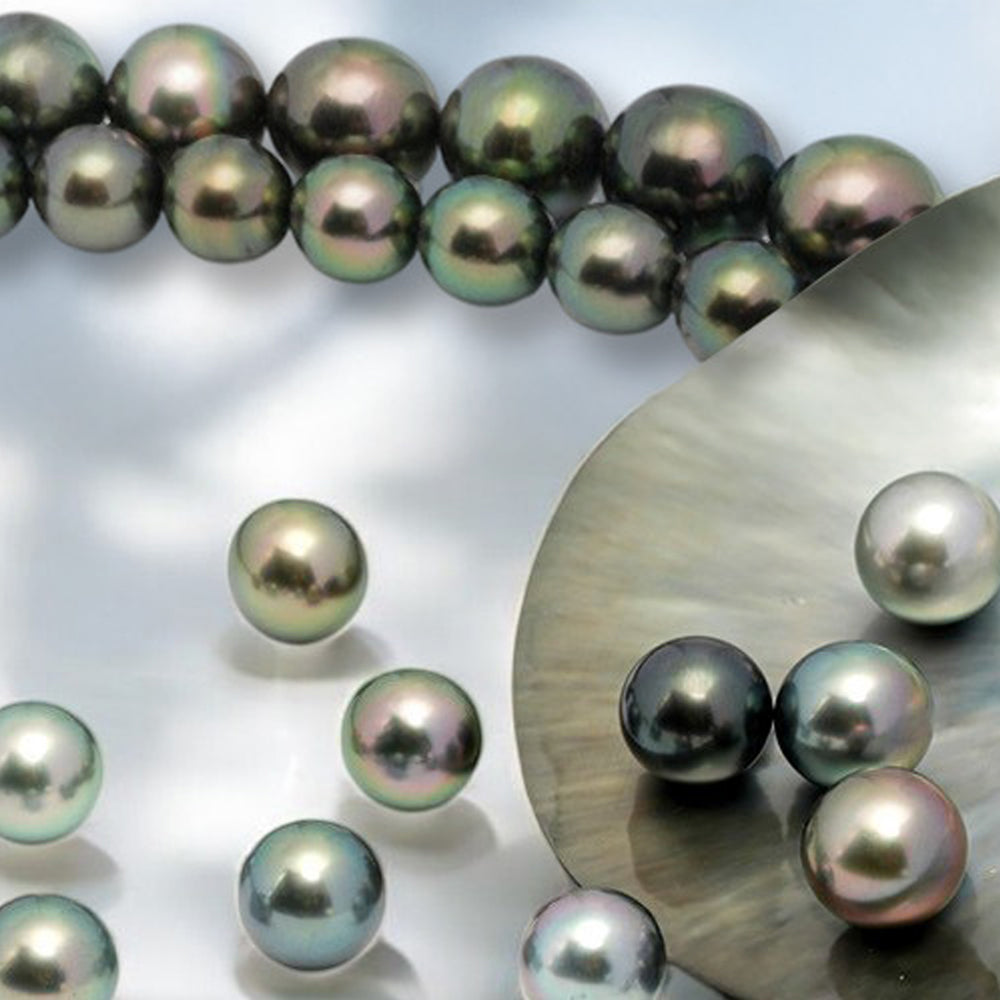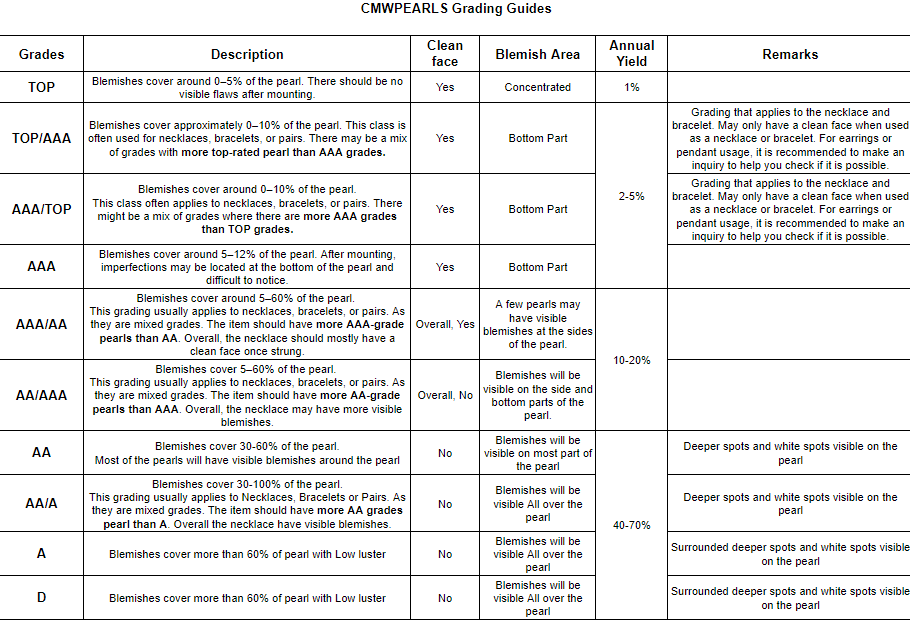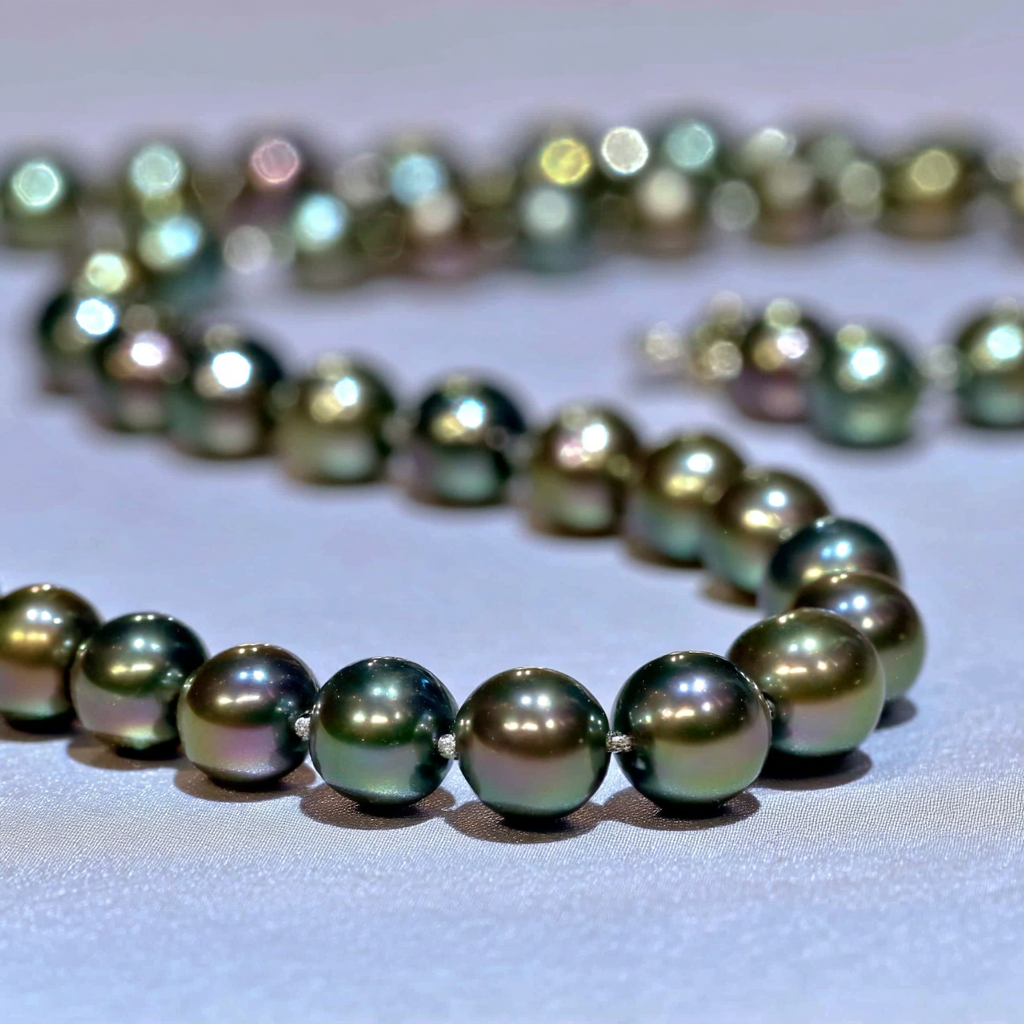
Is there a fixed price on Tahitian pearl Wholesale?
The Complex World of Tahitian Pearl Pricing: Why Standardization Remains Elusive.
The answer is NO, The wholesale pricing of Tahitian pearls defies standardization due to several key factors that make each pearl uniquely valuable. Unlike diamonds, which follow relatively structured grading systems, Tahitian pearls present a more nuanced challenge.
1. Unique Characteristics of Each Pearl
Tahitian pearls are naturally produced, unlike manufactured products whose quality, color, and shape can be precisely controlled. Each pearl is organically formed, making it nearly impossible to replicate the exact outcome. This inherent uniqueness results in significant variations in factors such as size, shape, color, luster, surface quality, and nacre thickness. For Exemple:
- Color: Tahitian pearls display a diverse spectrum of colors, ranging from deep black to peacock green, gray, and even rare shades like aubergine. Rare colors are highly valued, and even within the same color family such as green, obvious differences will be visible.
- Luster: The intensity and quality of a pearl’s luster—its shine and reflectivity—can vary widely, significantly impacting its value.
- Surface Quality: Pearls with fewer blemishes or imperfections are considered more valuable, and the location of these imperfections is entirely random and its quality can be seen differently from every individual.
- Shape: While perfectly round pearls are the most sought-after and have been standardized to some extent, there are probably over 1,000 different shapes, each with its own distinct characteristics, making every pearl unique.
This natural variability ensures that no two Tahitian pearls are alike, adding to their allure and value.
2. Grading Systems Are Subjective
While grading systems exist to categorize pearls based on quality, the process is not entirely objective. Different grading standards (e.g., AAA, AA, A) are used by various organizations and wholesalers, and interpretations can vary. For instance, one grader might classify a pearl as AAA, while another might consider it AA+. This subjectivity leads to extreme price variations even within the same grade.
3. Market Demand and Supply
The price of Tahitian pearls is heavily influenced by market dynamics. Factors such as:
- Rarity: Certain sizes, colors, or shapes may be in limited supply, driving up prices.
- Auction: Purchasing Tahitian pearls in bulk are sold to the highest bidder with hidden pricing, intensifying the competition and sparking significant price shifts.
-
Global Economic Conditions: Currency fluctuations, trade policies, and economic stability can impact pricing.
These factors create a constantly shifting market, making it difficult to establish fixed prices.
4. Quality of Cultivation and Harvesting
Tahitian pearls are cultivated in French Polynesia, and the quality of the harvest can vary from year to year. Environmental factors, such as water temperature and oyster health, play a significant role in pearl production. A year with fewer high-quality pearls will naturally lead to higher prices for those that meet premium standards. Also governmental regulation that may impact the pearl pricing such as, export regulation on quantity or taxes.
5. Negotiation in Wholesale Markets
Although many pearls are auctioned, in wholesale trading, prices are often negotiable. Buyers and sellers factor in order volume, relationships, and market conditions when setting prices. This flexibility results in varied prices for pearls of the same grade based on negotiation.
Conclusion
The absence of fixed pricing in Tahitian pearl wholesaling reflects the complexity and uniqueness of these natural gems. Grading provides a framework for assessing quality, but the final price is influenced by a combination of individual characteristics, market forces, and subjective evaluations. For buyers, this means that purchasing Tahitian pearls requires careful consideration, years of expertise, and often, a willingness to adapt to the fluid nature of the market.
For sellers, it underscores the importance of transparency and education in helping buyers understand the value of these exquisite treasures.



Leave a comment
This site is protected by hCaptcha and the hCaptcha Privacy Policy and Terms of Service apply.